
What does it mean to be a modern software development leader?
The answer to this question requires far more pages than this article has, but if we need to sum it up as much as possible, we would say that they’re a well-rounded individual with high technical and managerial skills.
In other words, leaders should have traits that allow them to develop to that level.
In this article, we’ll examine seven of those traits that can be considered crucial for a software development leader.
Want to know more about them?
Let’s start then!
Table of Contents
Adaptability
Software development is a dynamic field—if you don’t pay attention, the constant changes can leave you behind. That’s why it’s vital to develop adaptability as a leader.
But what does it mean to be an adaptive leader? Here’s how researchers Gary Yukl and Rubina Mahsoud define it:
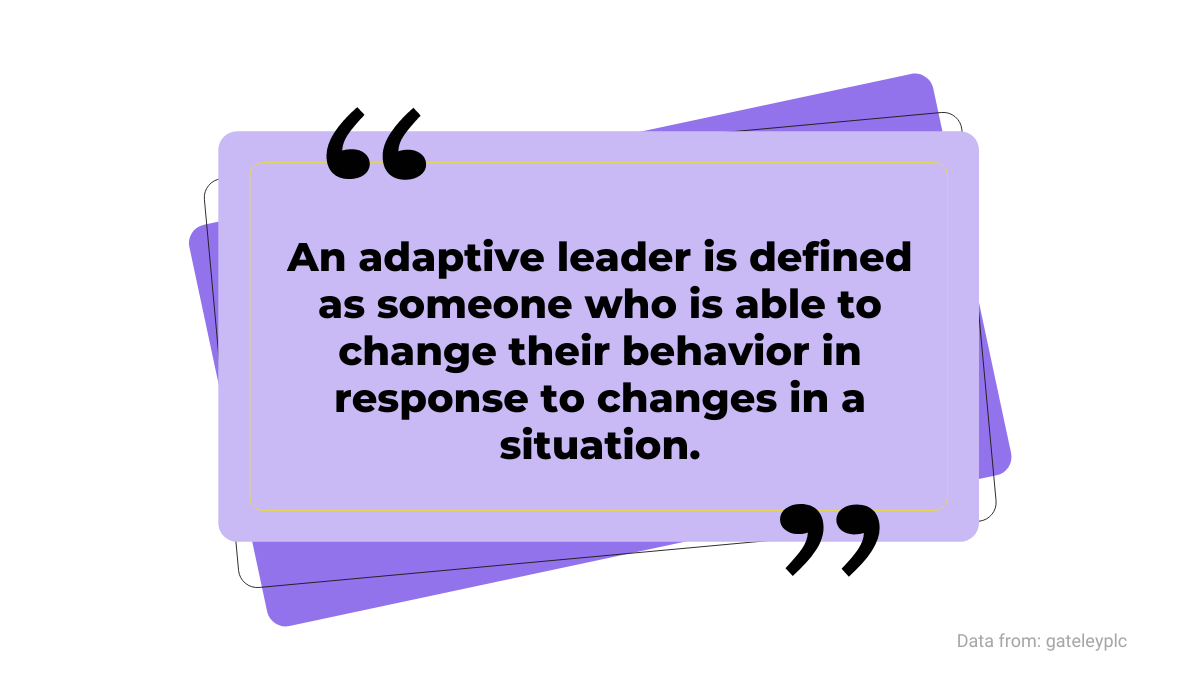
Sounds simple enough—to be adaptive, you need to change behavior when you notice a change in the situation.
However, that can be challenging when it comes to software development.
Software development leaders often need to think fast.

Get unreal data to fix real issues in your app & web.
Requirements during a project can shift, stakeholders and users might have different expectations than in the beginning, not to mention rapid technological changes.
For instance, look at the video below that depicts changes in the popularity of programming languages over the years.
A modern tech leader should be able to adapt to circumstances like that to be successful at their job.
There are ways to improve your adaptability to have the right mindset when the critical time comes. One of them is to lead a diverse team.
Why does that matter?
Because a team of people with different backgrounds, skills, and views will challenge you and make you evaluate your positions—in other words, they’ll prevent you from slipping into the status quo.
Besides improving your adaptability, creating a diverse team is also great for business. According to Harvard Business Review, you can count on more revenue due to innovation.
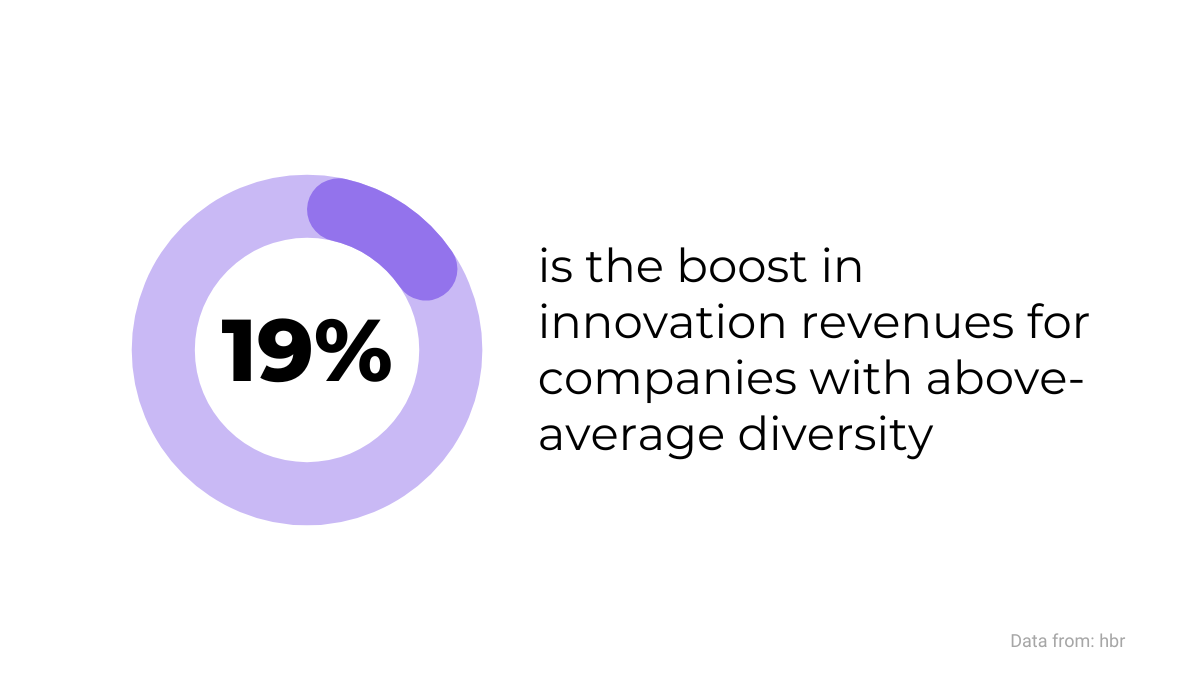
And when you have a diverse team, you should establish a psychologically safe environment where they can express themselves freely, without fear of judgment.
According to David Altman from the Center for Creative Leadership, you don’t have to worry about that environment being too soft—on the contrary, it’ll challenge you and make you adapt.
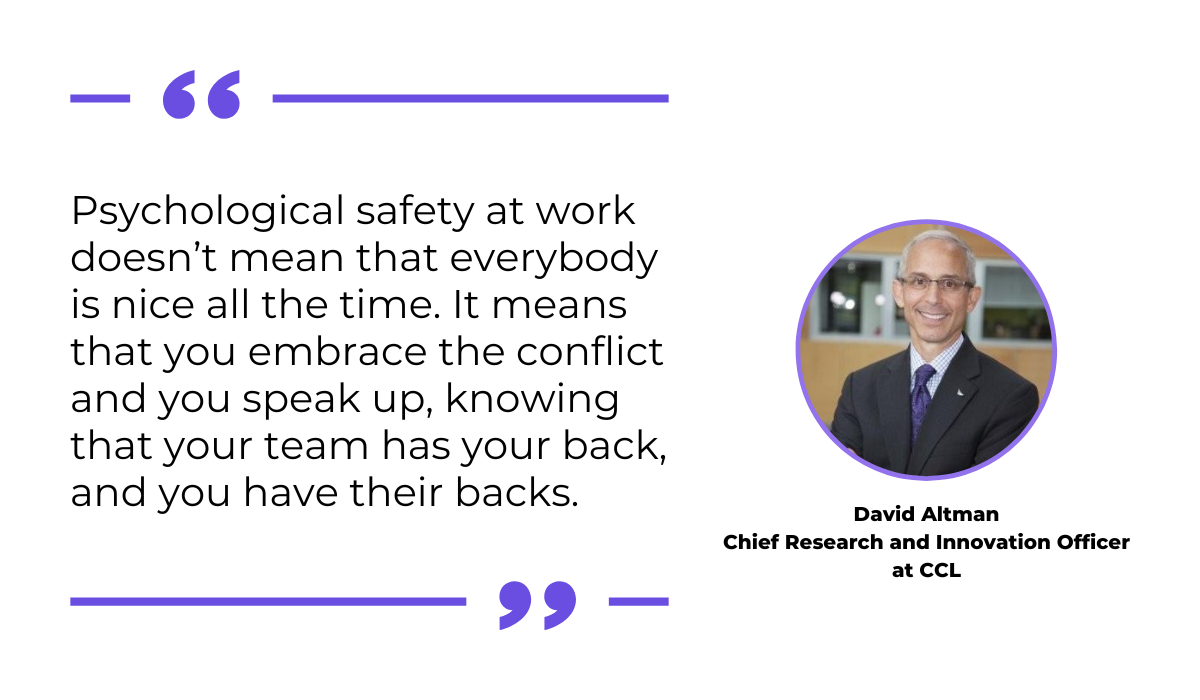
In conclusion, adaptability is crucial if you want to be a successful leader for your software development team.
However, you should create the right conditions to keep that adaptability ready to kick in—that way, you’ll make the right leadership decisions.
Resilience
Challenges are an everyday occurrence for software developers, whether it’s a bug in a product, a difficult client, or faulty equipment. As you probably know, they can come from many sources.
The important thing for a good leader is not to get frustrated when those challenges come. That’s why it’s vital to build up resilience.
As software engineer Paul Estrada puts it, you can’t eliminate issues completely, but you can learn to react to them.

In order to improve your resilience and navigate those challenges better, you should consider paying attention to managing your stress levels.
As a leader, you undoubtedly have many responsibilities on a daily basis, so it isn’t surprising if you sometimes get overwhelmed by them.
That’s why you should take regular breaks during the day, whether writing code or dealing with management tasks.
A simple but effective way to do that is to set up a Pomodoro timer.

Many Pomodoro tools are available, but for developers, the most useful ones are those that let you customize the length of work sessions.
Pomodor allows you to create sessions up to 60 minutes long, so you’re not limited to standard 25-minute chunks.
Nikita Kryzhanouski, a Senior Frontend Developer at Parimatch Tech, shared his experience with stress management.
He confessed that he used to work relentlessly for hours, which made him more stressed.
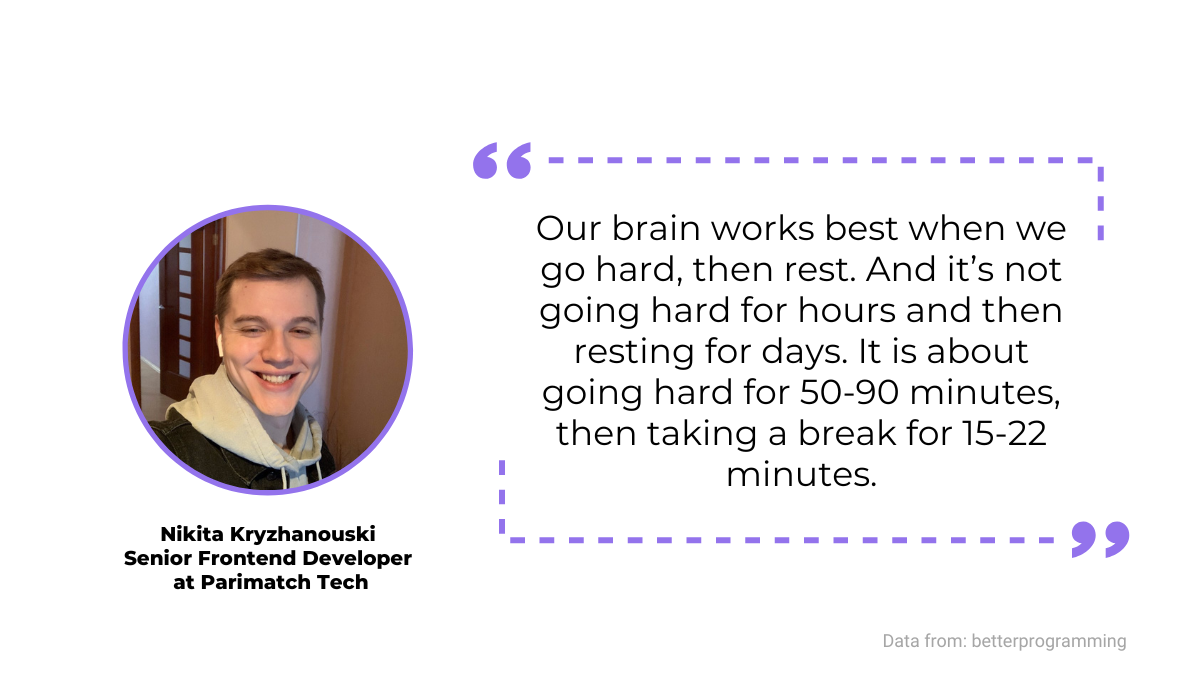
It’s important to employ techniques like that to take care of your well-being so that you can be tough and resilient when needed and avoid burn out.
Besides that, you’ll be able to build a resilient team. According to entrepreneur and speaker Brent Gleeson, those teams perform much better.
“Resilient teams (…) have a tendency to show consistent and better-than-average profitability year after year.”
Therefore, it pays off to develop a trait of resilience. Not only will you perform better when facing the challenges, but you can pass that on to your team.
High EQ
Modern software development leaders aren’t working on their code in isolation, just taking care of the technical side of the project—they deal with other developers and employees daily.
Therefore, having high emotional intelligence, or a high EQ, can make a difference between a poor-performing team and a team that produces excellent results.
Here’s what emotional intelligence stands for:

That means that leaders with a high EQ are aware that emotions play a big part in the team dynamic, and they’re able to empathize with others, which is crucial.
As we mentioned, developers today rarely work in isolation.
That reflects on a leader’s performance. According to data, empathetic leaders tend to do well in multiple areas.
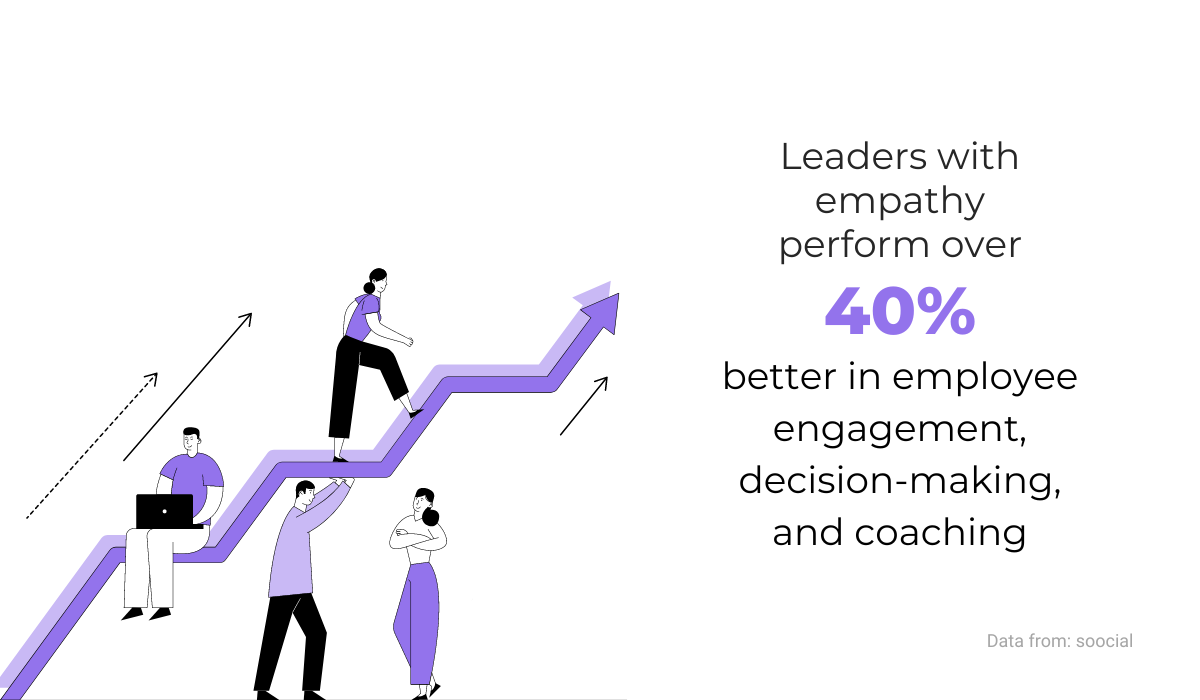
You can develop your empathy if you consciously pay attention to others.
According to Chriss Laffra, an Executive Director at JPMorgan Chase & Co, that includes observing others, their reactions to your messages, the body language—in short, notice the impact your behavior has on them.
“Treat the interaction as a “debugging” session, where you can set a breakpoint and inspect what is going on.”
Daniel Goleman, who popularized the concept of emotional intelligence with his works, also points out the importance of tuning into the impact you have on others.
If you can do that, you can fine-tune your leadership and reap the benefits.
Therefore, by listening to others, observing their reactions, and “debugging” your relationships with them, you can work on your EQ—a skill worth developing.
Learner mentality
Modern software development leaders should be curious about their field and regularly improve their knowledge.
That’s necessary if they want to be on top in the highly competitive world of software development, but also if they’re going to imprint that learner mentality onto their team.
Luckily, most developers got into that career because it allows them to fulfill their thirst for knowledge.
According to data from the 2020 State of Software Engineers survey, 82% of developers cited challenges and opportunities for continuous learning as the main factors that drew them to their careers.
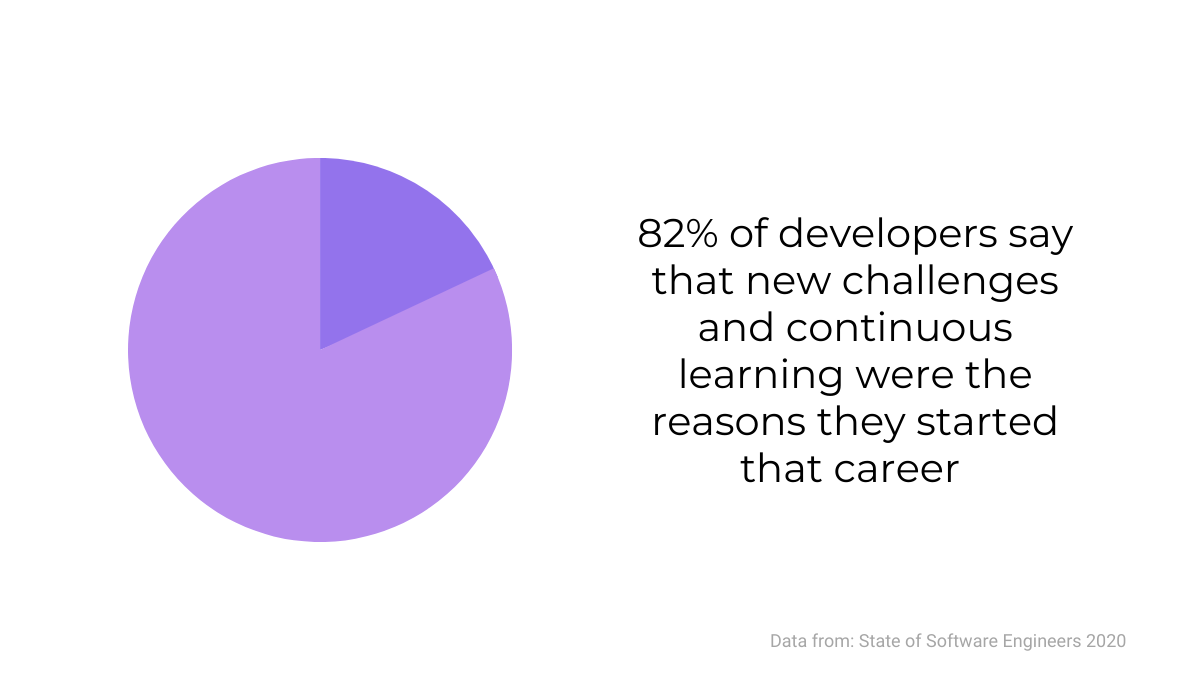
Some experts also point out that mentality is vital to the leader’s success.
For example, professors Ryan Gottfredson and Chris Reina distinguish between learning and performance mindsets.
While leaders with a performance mindset are motivated by gaining favorable judgments, those with learning mindsets are willing to go deeper to better themselves.
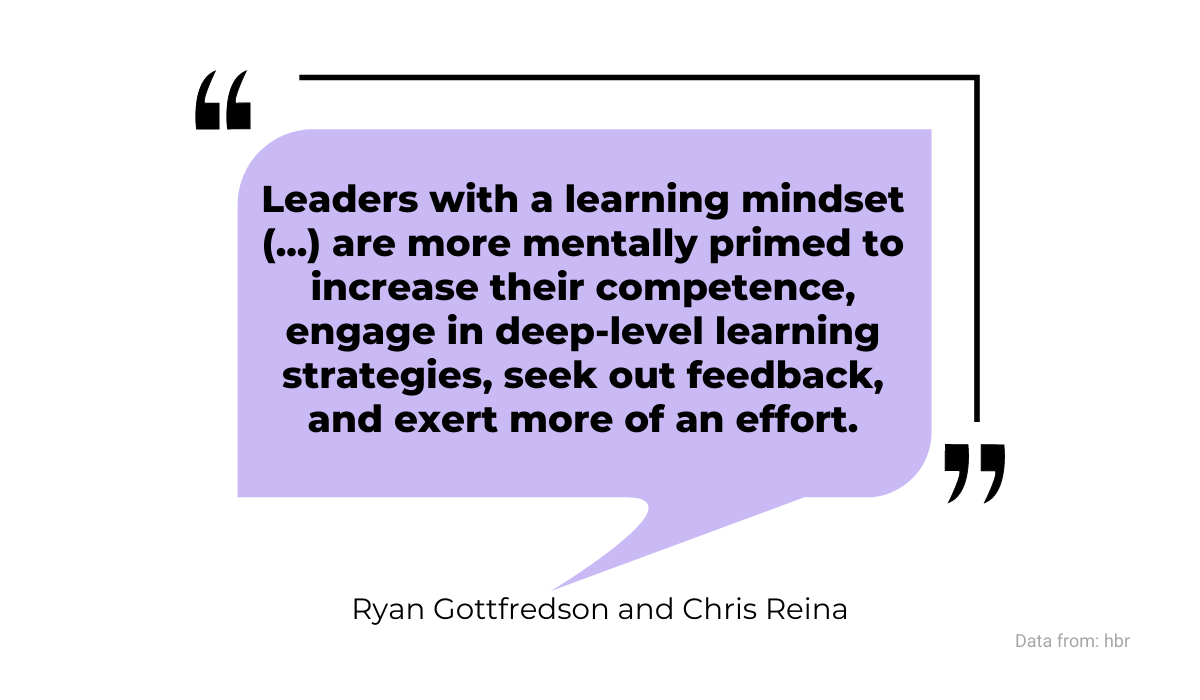
As those experts say, leaders with a learning mindset tend to perform at a higher level because of their adaptability, persistence, and will to cooperate.
A good way to develop a mentality like that is to immerse yourself in knowledge sources.
Luckily, thanks to technology, many things are at our fingertips.
For instance, you can engage in some high-quality online courses, like the one about Agile Leadership from the University of Maryland on the edX website.
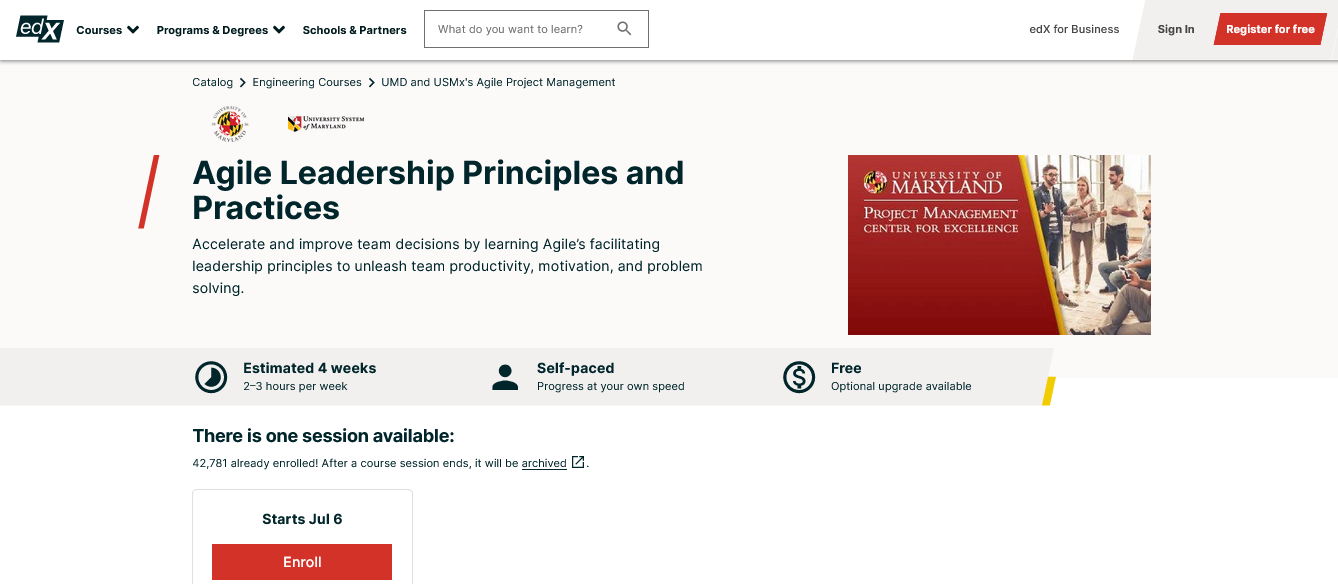
Furthermore, you can also turn to books, which are often just a few clicks away.
Semi Koen, Deputy Head of Global IT Apps & Services at Mizuho, recommends using the O’Reilly website to access many technical books on various topics.

They also offer videos, tutorials, and other sources of knowledge, so there is lots of content to immerse yourself into.
There is always a way to learn something new. Developing a learner mentality can make you a better leader step by step, and the results will reflect that.
Big picture focus
Good developers can tightly zoom in on a particular task and block out other factors to complete it the best they can. However, when you’re a leader, your scope should be broader.
In other words, software development leaders should have the big picture in focus.
They need to consider the needs of developers, managers, stakeholders, and users and how the product and its features correlate to that.
Everything should move in the right direction. To achieve that, you can try to establish Objective and Key Results (OKRs). Here’s how Bernard Marr defines them:
In short, they help leaders see the big picture, move away from individual tasks and micromanaging, and instead lead everyone in the team in the same direction, as OKR trainer Felipe Castro explains.
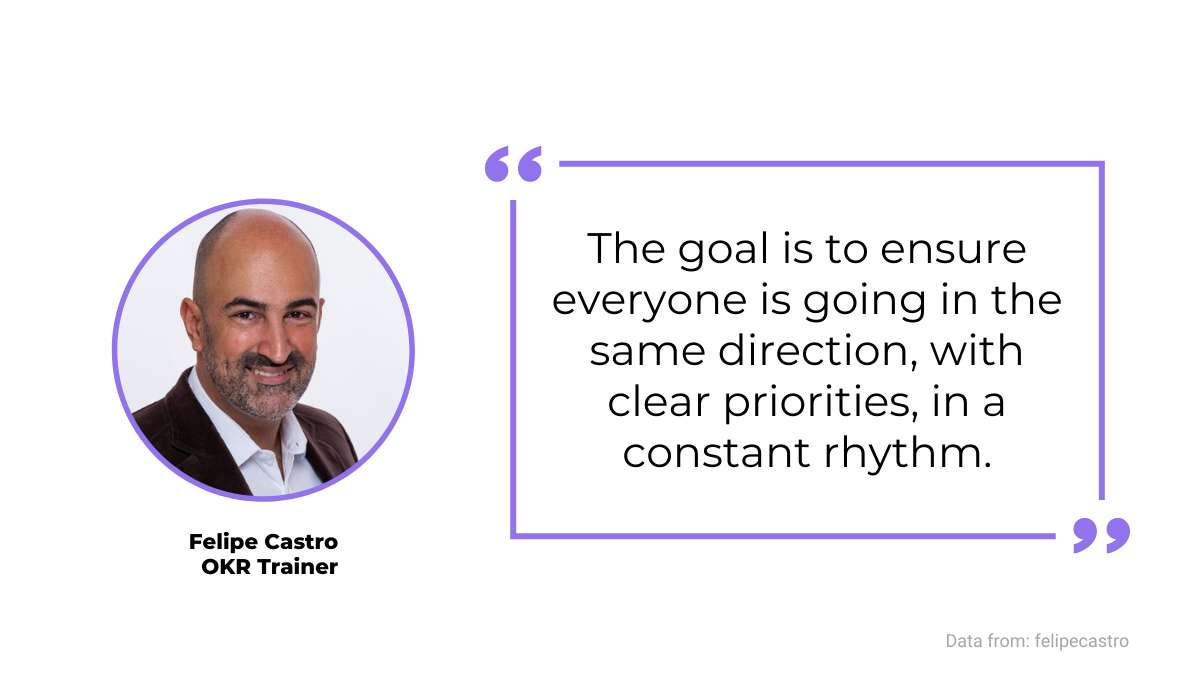
OKRs have two separate components—objectives and key results.
The main difference between them is that the former is what the goal is, and the latter is how to accomplish it.
For example, Google has been using OKRs since 1999, when John Doerr, one of the investors, proposed it.
Below you can see an example of an OKR from Google.
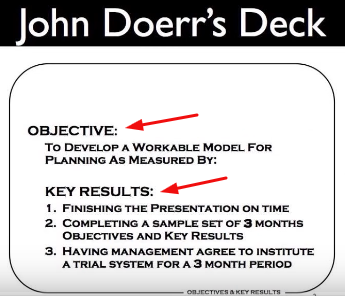
As you can see, there is an objective and three key results on which it’s measured. You can watch more about Google and its approach in Rick Klau’s workshop.
To set up OKRs easier and get the big picture of your project, you can use software tools like ClickUp.
Their Goals feature allows you to set up and edit objectives and key results.

You can then keep track of them, share them with your team and use many other features that help you zoom out and see the big picture.
As a leader, you should do what it takes to see the project as a whole—having that unique perspective can guide you and your team to success.
Delegation
Software development leaders have many responsibilities and can often get torn between technical tasks, managerial tasks, meetings, and a seemingly endless list of little things to look into.
Therefore, they should delegate a part of that load to other team members. Otherwise, they can slow the progress of the whole team.
It’s important to distinguish between delegating work and giving up on doing it. As Ken Blanchard, experienced author and business leader, points out, those aren’t the same.
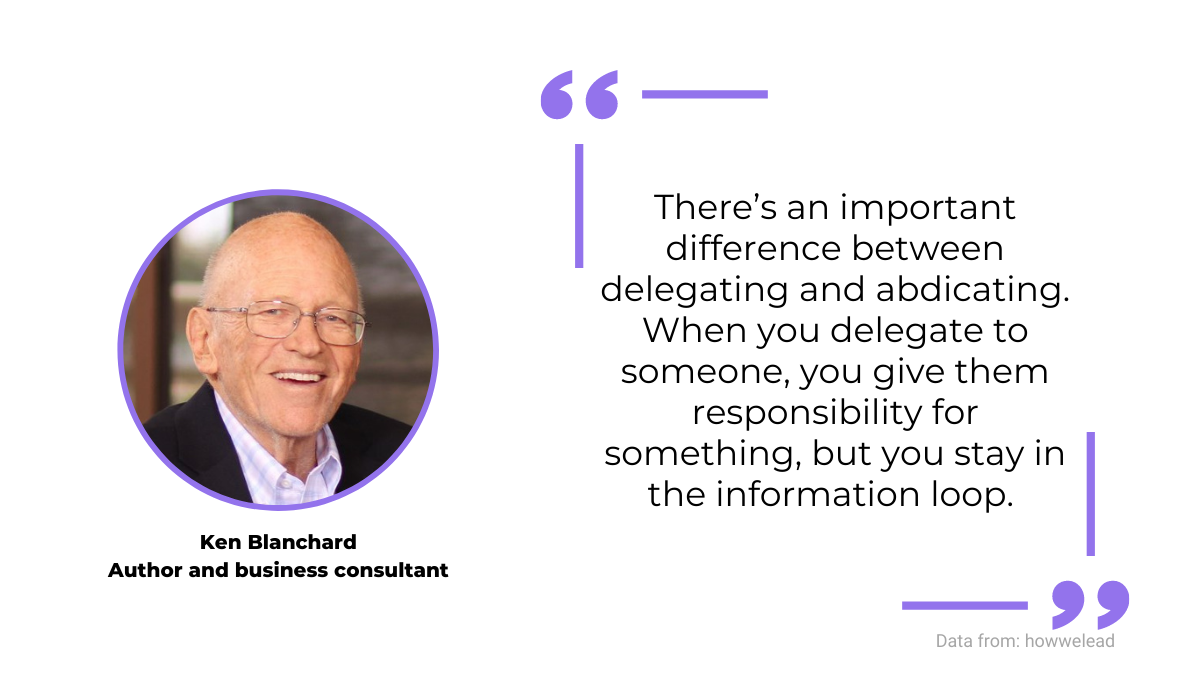
Therefore, a leader should remember that giving others responsibilities still means they can oversee their work.
On the other hand, it doesn’t mean that they’re bad leaders just because they can’t efficiently handle all the work themselves— on the contrary.
As Andrei Gridnev suggests, it gives the leader more time to lead—to focus on making decisions, tackle critical issues, and provide developers opportunities to improve their skills.
To delegate effectively, besides giving a person a task, you should provide them with authority also.
For example, if you’re using project management software like Wrike, you can assign them to a task.
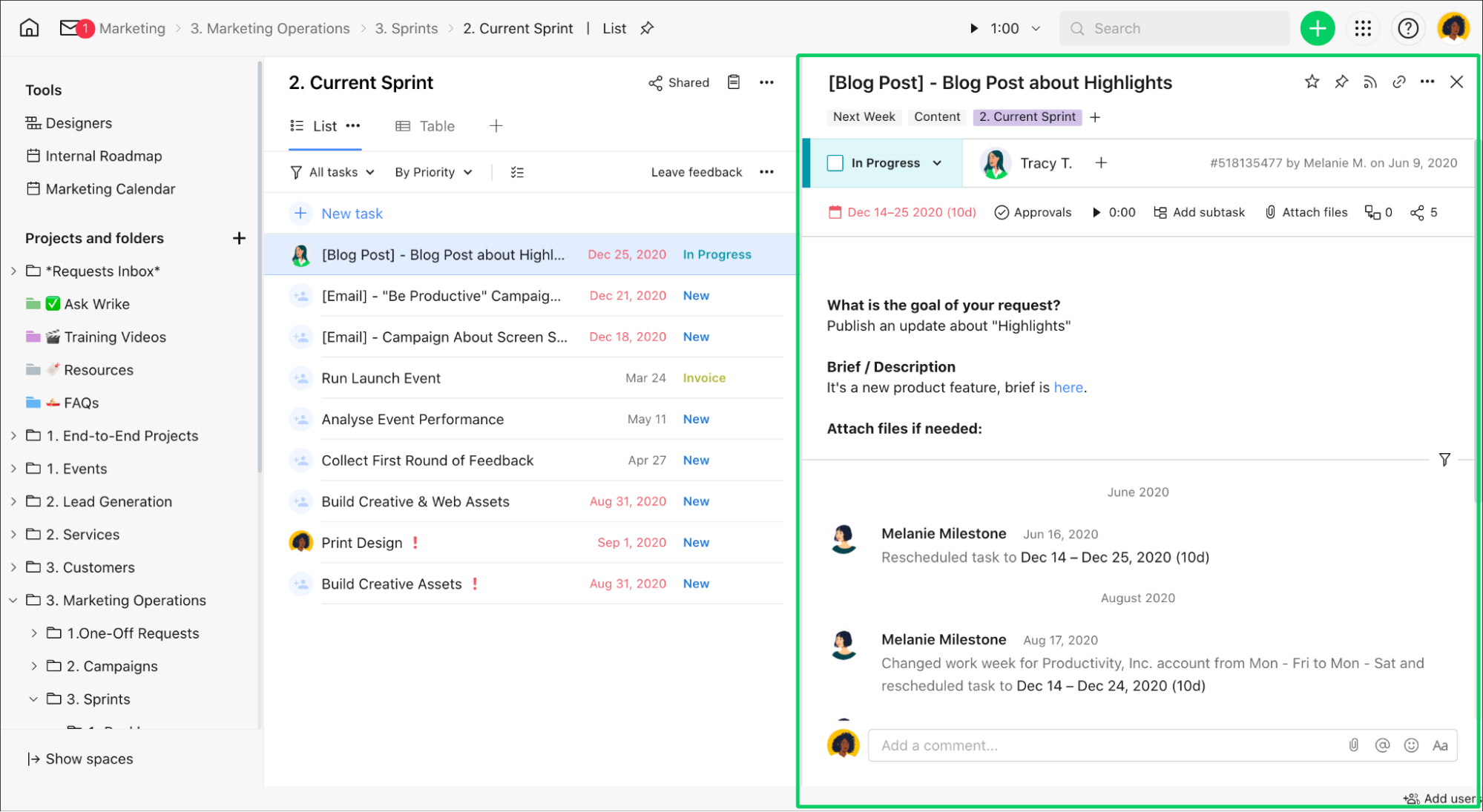
That way, you show your trust in their abilities, and the other team members also see who is responsible for a particular task.
After you delegate a task, consider checking on the progress and following up with some feedback.
Tools like nTask allow you to track progress and leave comments to nurture a culture of regular feedback without micromanaging your teammates.

If you’re still having trouble with passing responsibilities to others, consider starting with small tasks, as Thomas Griffin, Co-founder of OptinMonster, advises.
“Start by prioritizing everything you need to get done and delegate the bottom priorities to others.”
There are many demands from a modern software development leader, but that doesn’t mean that you as one need to do them by yourself.
Leaders have teams, so use yours and distribute some of your work.
Servant leadership
Modern software development leaders know that to get the best out of their team, they should empower them and help them use all of their potentials.
If you have that trait, you might be a great servant leader.
But what exactly is servant leadership?
According to Aaron Longwell, Software Development Manager at Amazon Web services and a servant leader, that’s flipping the traditional idea of leadership upside down.
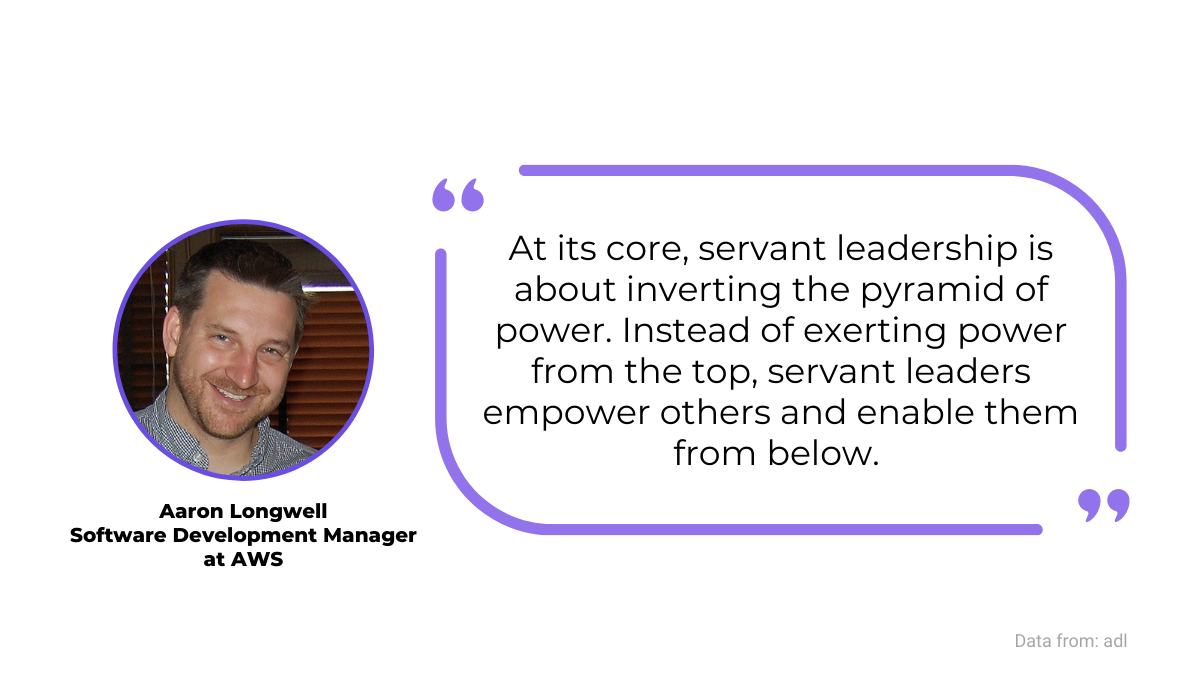
The pyramid of power he mentions is a traditional structure with a Board of Directors on top, followed by a CEO, executives, managers, and employees at the bottom—from people with the most power to those with the least.
Servant leadership approaches that structure in an opposite way, as you can see in the diagram below.
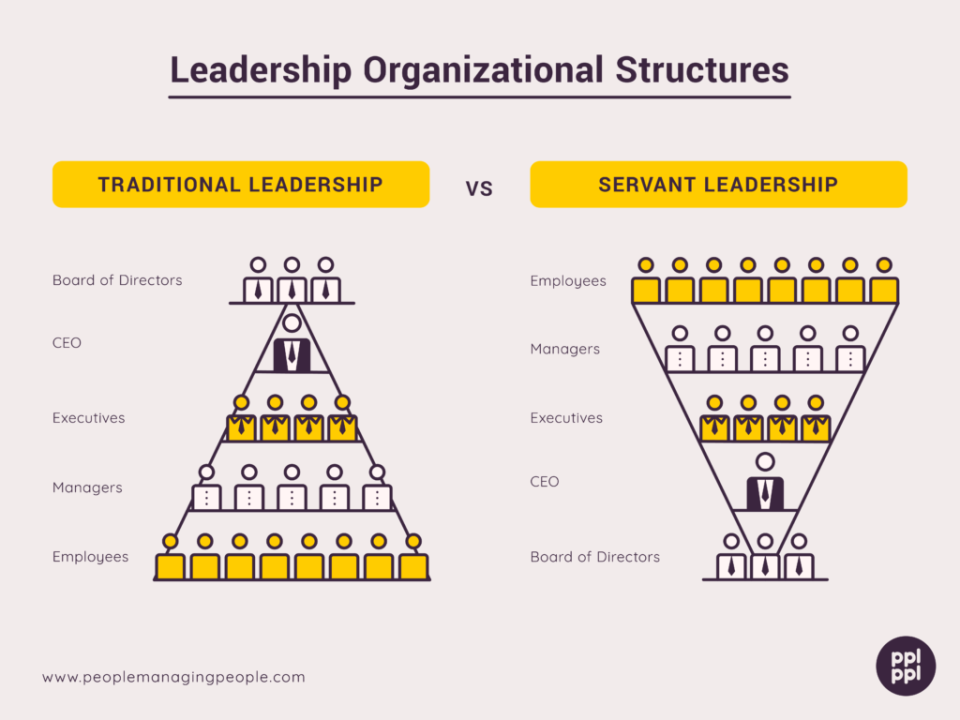
Although it might seem like a radical idea, in essence, it’s an approach that puts employees in the center, and the leaders help them grow, learn and improve their skills—it’s not difficult to see how that can benefit the organization as a whole.
You can practice servant leadership right from the beginning—from the onboarding phase.
According to Michael Timmes, a human resource expert, that’s simple to achieve. All you should do is show that you value the opinions of your new hire.
“During onboarding (…), the servant leader should solicit the new hire’s observations, impressions, and opinions. This conveys the message, from the onset, that the employee’s thoughts are valued.”
Empowering your developers can significantly impact their performance, as the advocates of servant leadership say.
They feel more engaged, driven, and trusted, which helps with retention.
In conclusion, being a servant leader can be a very useful tool in your leadership toolbox.
Developers can produce great results when you show them they’re valued; it would be wasteful to miss out on that.
Conclusion
As you can see throughout this article, being a modern software development leader is challenging.
However, that challenge becomes more manageable if you develop traits that can help you succeed at your job.
A leader who is adaptable, resilient, has a high EQ, possesses a learner mentality and an ability to see the big picture, knows how to delegate, and adopts servant leadership is one that can guide their team to greatness.
We hope that this article will help you get there.





